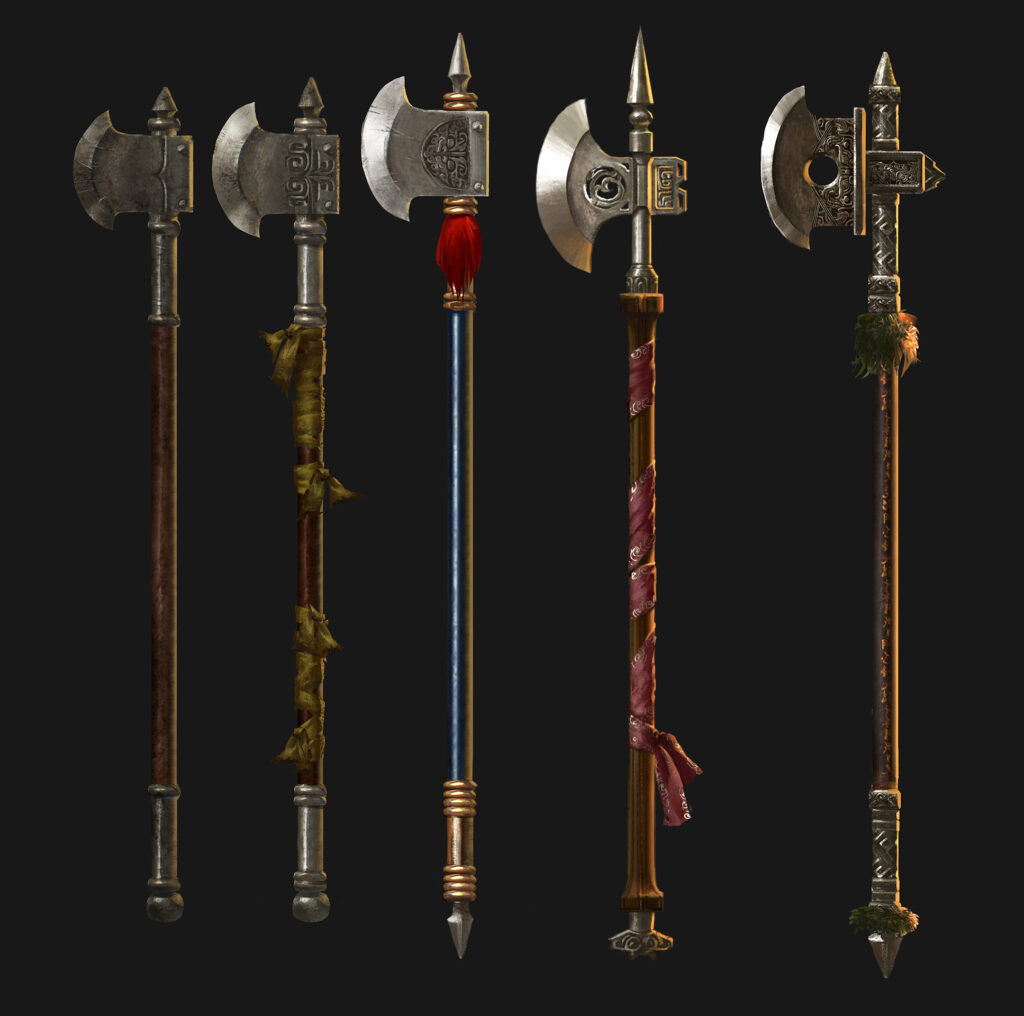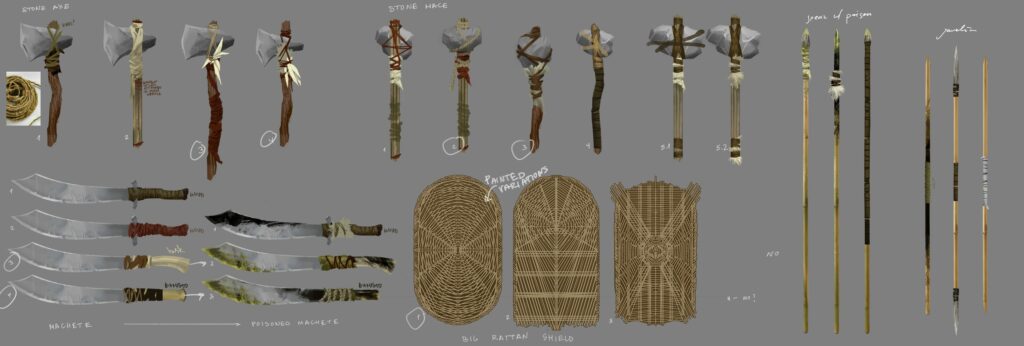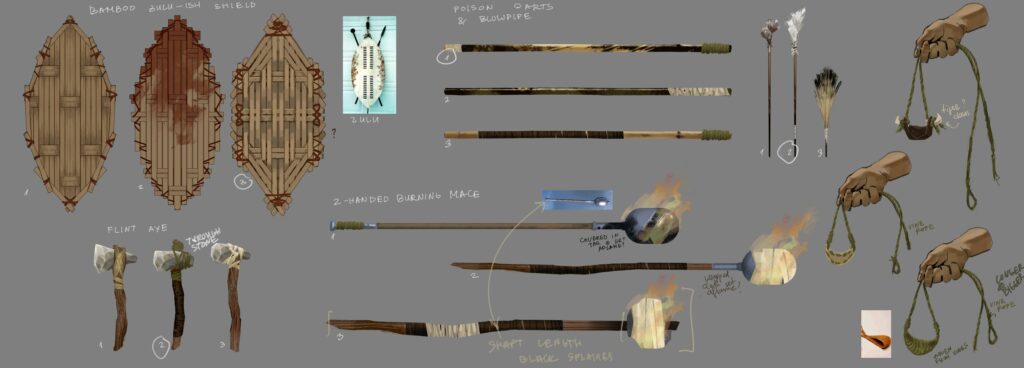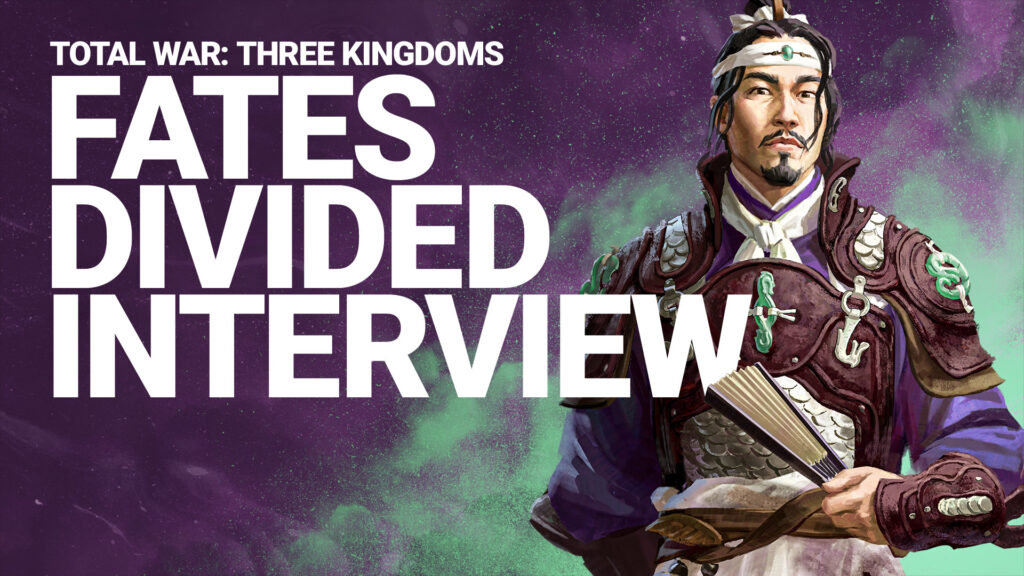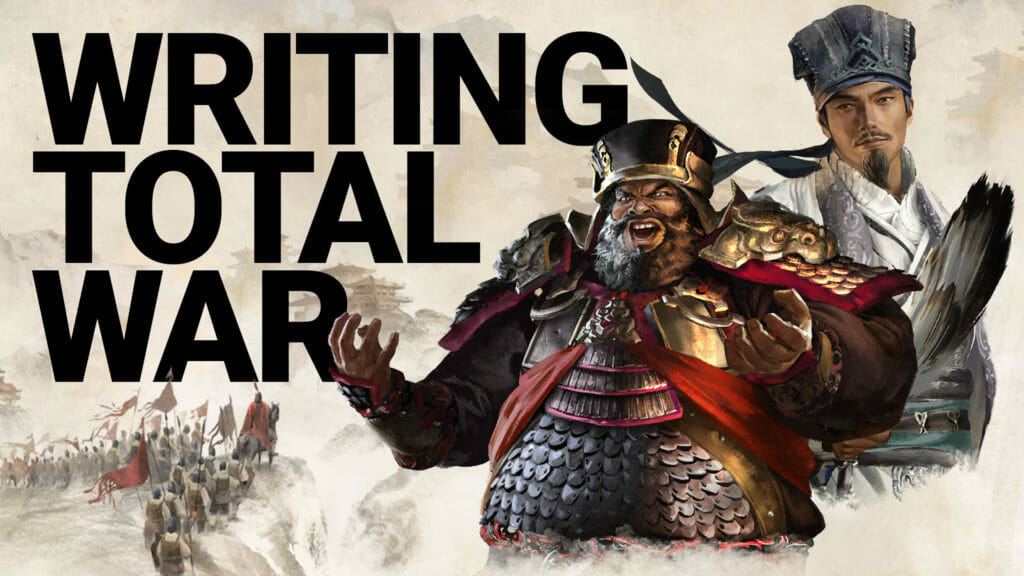Star-Crossed Brothers: Weapon Design in Total War: THREE KINGDOMS
Characters’ weapons play a big part in their identity in Total War: THREE KINGDOMS – especially when they’re getting up close and personal with a long-held rival on the battlefield.
We again sat down (socially distanced) with THREE KINGDOMS DLC team associate concept artist Teodora “Teo” Petkova and senior concept artist Beth Hobbs, this time to talk about the game’s iconic weapon design from research all the way to realisation – check it out below.
From Sworn Brothers to Red Sisters
According to Teo, designing weapons is usually a bit more of a straightforward process than designing costumes (but still an extremely thorough one):
“We begin with a brief description of what’s needed given to us by the designers, after which we gather historical references and then the actual process of designing begins. This usually involves considering who’ll be using the weapon, what their story is and how that can be visualised through the weapon, the class of the weapon, what tier of soldier/general will be using it, whether it’s for a generic unit or a unique character, etc. All this influences how we approach the weapon designs.”
Beth echoes the above, adding that, before the pandemic, she’d also “go straight to this little book we have in the office about Chinese weapons. Unfortunately, the text is written in Chinese… but it has pictures to use as reference!”
Briefing (and little books) aside, both Teo and Beth have their own approaches when it comes to the next steps of the research process.
Teo explains: “Some of the more elaborate weapons will have descriptions in the Romance of the Three Kingdoms novel, from which we get information and inspiration, but for the most part we rely on historical research online, archaeological findings, and descriptions from books – and some artistic liberty and imagination.”
In Beth’s case, “it’s looking through that book and at our existing concepts, especially if it’s for a hero as the weapon should fit the character design if it’s for a particular person. I’m also looking at museum artifacts and weapon props in Chinese TV shows and movies to inform myself as much as possible about shape languages.”
And what about the all-important question of whether handling actual weapons helps when designing them?
A resounding “Definitely! All such experiences can be a source of good insight and inspiration!” from Teo, and as for Beth: “Oh, I bet it does! Sooo, CA – fancy giving us artists some weapon training?”
Duelling dragons
Much like when designing armour for Total War: THREE KINGDOMs, the process of designing weapons has its own particular intricacies.
Teo believes that a lot of this hinges on who will be wielding the weapon, saying: “The challenge when making weapons for units is making weapons that won’t be too visually overwhelming when being held by hundreds of them at a time as part of a big army while also keeping them interesting. The challenge with bespoke weapons for heroes is communicating their story through them, especially if it is closely related to the character’s identity.”
Beth, meanwhile, is keen to emphasise the importance of medium: “Again, technical limitations are the biggest challenges. Character animations will dictate where the weapon is held by the soldier’s hands, where the impact area of the weapon is, and how long and/or big it can be.”
Teo agrees: “You don’t want it to be so large that is intersects with the character when used – or too small. And if the weapon is part of the character’s costume, you need to think about where you can position it so it doesn’t create skinning or deformation issues.”
Variation and verisimilitude between large numbers of similar units wielding the same weapon is a key consideration when working on Total War games, as Beth explains further: “Just like characters readability at a distance is important, but unlike characters we don’t want something distinctively unique in the design! Since there’ll be hundreds of the same weapon wielded by lots of people, we don’t want parts that stand out in a weird way – like a big distinctive scratch across a blade.”
So where does the balance lie between trying to maintain historical realism and the potential freedom afforded by making virtual weapons for a video game?
“Realism in a historical title such as THREE KINGDOMS is very important,” Teo affirms. “However, sometimes when there is a lack of references or the source novel presents a more mythical weapon concept, we do allow ourselves a little more artistic freedom. And of course, as games completely virtual, it does give us the freedom to explore these more mythical ideas.”
Beth similarly opines: “We’d like the weapons to be believable and grounded, but also varied so we add a sprinkling of design liberty in there. With video games, you could design anything as a weapon, really! But with THREE KINGDOMS being a more realistic title, in comparison to say WARHAMMER, we keep it more low key.”
Best sword forward
Everyone has their favourites – so what are Teo and Beth’s top weapon designs that they’ve worked?
When asked for her favourite, Teo’s response was: “Any of the weapons designed for the heroes! There’s a lot more freedom in how unique they can be.”
As for Beth: “Probably any of the guandaos – they’re such a rad-looking and iconic Chinese weapon, so it’s a breath of fresh air to design compared with, say, bows, shields, and swords!”
She also has a strangest weapon design: “Zhang Jue’s staff in Mandate of Heaven. Thankfully, we found good reference drawings of what it should look like, but essentially I got to paint an unusual-looking staff with, if I remember correctly, a bird on top.”
And finally, what advice would they give somebody designing weapons for video games themselves?
Teo’s tips: “Weapons are not only small representations of the world in which they exist – so they need to be considered in the environment in which they are used – but they are also extensions of the hero’s identity, and the design should represent that identity. When designing a weapon, consider its place in the world, how and by who it will be used, its significance in the narrative, any mythology surrounding it, and of course its connection with any other special characters. And then do the research required to make it logical – all good design is fundamentally based on reality and is believable.”
And Beth’s: “I’d say a good weapon design can tell a story just like a character design, so keep on with that style of thinking – even when it comes to small things like items and props. Now, CA – back to that weapon training thing…”
Forge your path to enlightenment!
Want to find out more about what it takes to make a Total War game? Be sure to take a look at our behind-the-scenes-content-rich blog back catalogue, and keep an eye on our social media channels for all the latest news and announcements!
